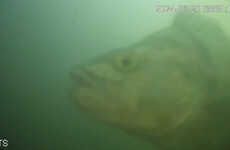A group of researchers and engineers working out of Stanford University have developed a unique sensor system that is designed to be capable of monitoring the feeding habits of whales without intruding on their environment in any way.
These sensor systems were attached to baleen whales located in different regions of the world using painless and non-intrusive suction cups. These sensors were then activated to capture and depict whales' moments while also recording high-quality footage at the same time.
By combining movement-tracking systems with video captures, these high-tech sensor systems promise scientists a whole new perspective on whale behavior. While these sorts of systems have been used separately before, their simultaneous combination and deployment offers researchers a supremely comprehensive picture of their subject of study.
Whale-Tracking Sensor Systems
These Stanford University Sensors Study Whale Feeding Habits
Trend Themes
1. Whale-tracking Sensor Systems - Creating non-intrusive sensor systems for tracking whale feeding habits enables scientists to study their behavior effectively.
2. Movement-tracking Systems - Combining movement-tracking systems with video captures offers researchers a comprehensive perspective on the behavior of whales.
3. High-quality Footage Recording - Developing sensor systems that can record high-quality footage provides scientists with valuable insights into whale behavior.
Industry Implications
1. Marine Biology - Applying non-intrusive sensor systems in marine biology allows for the study of whale feeding habits and behavior.
2. Wildlife Conservation - Using movement-tracking systems and video captures contributes to the conservation efforts of whales and their habitat.
3. Environmental Research - The development of high-quality footage recording sensor systems aids in environmental research related to whale populations and marine ecosystems.






